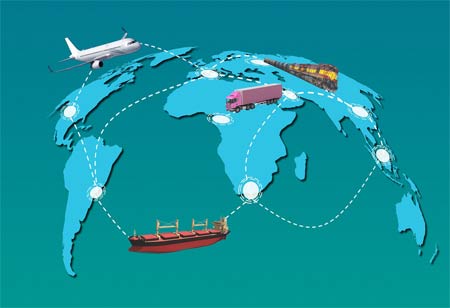THANK YOU FOR SUBSCRIBING
THANK YOU FOR SUBSCRIBING

By
Logistics Transportation Review | Thursday, August 22, 2024
Stay ahead of the industry with exclusive feature stories on the top companies, expert insights and the latest news delivered straight to your inbox. Subscribe today.
The air freight industry uses advanced technologies like biometric identification and cybersecurity to protect shipments and personnel, requiring collaboration among stakeholders like airlines, cargo handlers, and customs authorities.
FREMONT, CA: Air freight, a critical component of global trade, necessitates rigorous security measures to protect shipments and ensure the safety of personnel and the public. The demand for comprehensive and effective security protocols increases as air cargo volumes grow.
The air freight industry has implemented comprehensive security protocols and technologies to address potential risks and ensure the safe transportation of cargo. These measures are anchored by regulatory frameworks, such as those established by the International Civil Aviation Organization (ICAO), which sets global aviation security standards, and regional bodies like the Transportation Security Administration (TSA) in the United States and the European Union Aviation Safety Agency (EASA), both of which enforce stringent air cargo security regulations.
Technology plays a crucial role in enhancing security. Biometric identification systems, including fingerprint, facial recognition, and iris scanning, verify personnel identities and control access to secure areas. Advanced X-ray imaging, Explosive Trace Detection (ETD) devices, and Radio Frequency Identification (RFID) tags are employed to detect concealed threats and track cargo throughout the supply chain. Global Positioning System (GPS) tracking and robust cybersecurity measures—such as firewalls, intrusion detection systems, and encryption—provide real-time monitoring and protect against cyberattacks.
As the air freight industry continues to evolve, so do its security challenges. While foundational measures are essential, the sector must effectively adopt advanced strategies to counter emerging threats.
Artificial Intelligence (AI) and Machine Learning transform security protocols by enhancing anomaly detection, image analysis, and predictive analytics. AI algorithms can sift through vast datasets to identify unusual patterns or behaviors that may signal a security threat. Moreover, AI-powered systems can improve the accuracy of X-ray screening by automatically detecting and classifying suspicious objects. At the same time, predictive analytics enable proactive risk management based on historical data and trends.
Blockchain Technology offers unparalleled security through immutability, transparency, and smart contracts. It can create an unalterable record of a shipment's journey, reducing the risk of tampering or information falsification. Additionally, blockchain's real-time visibility into shipment locations and statuses enhances accountability, while smart contracts automate processes, such as releasing payments only after safe delivery.
Biometric Authentication enhances security through multi-factor authentication and continuous identity verification. By combining biometric data—such as fingerprints or facial recognition—with other authentication methods, the industry can significantly reduce the risk of unauthorized access.
Drone Surveillance is becoming increasingly vital for perimeter monitoring and shipment tracking. Drones provide real-time surveillance of airport facilities and cargo areas, detecting unauthorized activities and ensuring shipments adhere to their intended routes.
Enhanced Cargo Screening Technologies, such as Computed Tomography (CT) scanners and neutron scanners, offer more detailed and precise screening of cargo. CT scanners produce 3D images for a comprehensive view of contents, while neutron scanners detect hard-to-identify materials, such as explosives and nuclear substances.
Supply Chain Risk Management is essential for maintaining the integrity of air freight logistics. Regular third-party audits, thorough vendor vetting, and well-developed incident response plans are critical components of a robust security strategy, helping to identify and mitigate risks within the supply chain. Supply chain security is further reinforced through programs like the Known Consignor Program, which expedites screening for trusted shippers and implements tamper-evident packaging. Secure facilities and transportation protocols, including controlled access, surveillance, and armed escorts for high-value shipments, protect cargo from unauthorized access and potential threats.
Adequate air freight security necessitates collaboration among diverse stakeholders, including airlines, cargo handlers, customs authorities, and technology providers. Through coordinated efforts, these entities can exchange information, best practices, and resources, thereby enhancing the overall security of the air cargo supply chain.
The demand for robust air freight security measures will increase as the global economy evolves. By investing in advanced technologies, adhering to rigorous regulations, and promoting collaboration, the industry can ensure the safe and efficient transportation of goods globally.
I agree We use cookies on this website to enhance your user experience. By clicking any link on this page you are giving your consent for us to set cookies. More info





